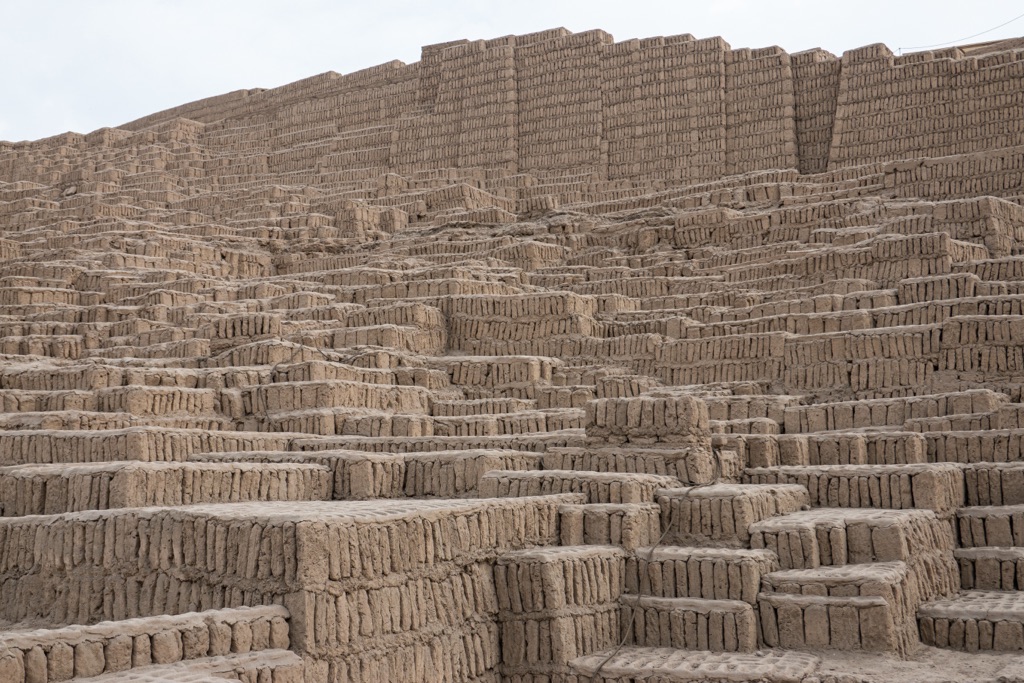Huaca Pucllana is a significant archaeological site located in the Miraflores district of Lima, Peru. This ancient complex was once a ceremonial and administrative center for the Lima Culture, a society that thrived in the region between 200 AD and 700 AD. The site features a great adobe and clay pyramid and is a prime example of pre-Inca architecture. Huaca Pucllana stands as a testament to the complex social and religious practices of the indigenous cultures of the Peruvian coastal area.
Get your dose of History via Email
Historical Background of Huaca Pucllana
Archaeologists discovered Huaca Pucllana in the 20th century, but it was not until the 1980s that systematic excavations began. The site was built by the Lima Culture, known for their mastery of irrigation and adobe construction. The Lima people inhabited the area, developing a complex society well before the rise of the Inca Empire. Huaca Pucllana served as a hub for both ceremonial functions and administrative leadership.
Over the centuries, the site experienced various phases of use and transformation. After the Lima Culture, the Wari Empire used the site, leaving behind distinct cultural artifacts. The Ichma people later occupied the area, utilizing the site until the Incan conquest in the 15th century. During the colonial period, Huaca Pucllana fell into disrepair, and locals repurposed its bricks for new construction.
The rediscovery and excavation of Huaca Pucllana have shed light on the Lima Culture’s way of life. Excavations have uncovered tombs, textiles, pottery, and food remains. These findings suggest that the site played a significant role in the social and religious aspects of the Lima people. The pyramid itself was likely a sacred space, used for rituals including offerings and possibly human sacrifices.
Historically, Huaca Pucllana has also been a focal point for understanding the pre-Columbian history of the coastal Andean region. The site’s preservation and study provide insights into the political organization, economic systems, and religious beliefs of the early Andean societies. The pyramid’s architecture, with its trapezoidal platforms and staircases, reflects the complex urban planning and construction techniques of its builders.
Today, Huaca Pucllana is not only an archaeological treasure but also a cultural heritage site. It serves as a reminder of Peru’s rich pre-Hispanic past. The site is open to the public, offering guided tours that help visitors understand the significance of this ancient monument within the context of Peruvian history.
About Huaca Pucllana
Huaca Pucllana is primarily known for its impressive central pyramid, which measures approximately 500 meters in length, 100 meters in width, and 22 meters in height. The pyramid is made of millions of adobe bricks, which were sun-dried and then laid in bookshelf fashion, a technique that provided stability against earthquakes. The structure is divided into two sections: one for ceremonies and the other for administrative purposes.
The site’s construction reflects the Lima Culture’s advanced knowledge of engineering and architecture. The pyramid’s design includes a series of small, built-in platforms that were used for ceremonial fires and offerings. The adobe bricks were made from a mixture of clay and small pebbles, materials readily available in the river valleys of coastal Peru.
Archaeologists have also discovered a complex system of plazas, ramps, and courtyards surrounding the pyramid. These spaces likely accommodated large gatherings and processions. Residential and administrative areas were also part of the complex, indicating that Huaca Pucllana was a bustling center of activity for the Lima Culture.
One of the architectural highlights of Huaca Pucllana is the presence of deep pits, which were used for burials and offerings. These pits have yielded a wealth of artifacts, including ceramics, textiles, and remains of marine life, which were crucial to the Lima people’s diet and economy. The preservation of these materials has been exceptional, thanks to the arid climate of the Peruvian coast.
Restoration efforts at Huaca Pucllana have been ongoing since its discovery. These efforts aim to stabilize the structure, prevent further erosion, and allow visitors to appreciate the site’s historical significance. The restoration process is meticulous, often involving the reconstruction of adobe bricks using traditional methods to maintain the site’s authenticity.
Theories and Interpretations
Several theories exist about the use and significance of Huaca Pucllana. Most scholars agree that it was a ceremonial center, as evidenced by the remains of altars and ritual spaces. The discovery of human remains suggests that sacrifices were part of the religious practices at the site. Some theorize that these sacrifices were made to appease the gods and ensure agricultural fertility.
There is also speculation about the administrative role of Huaca Pucllana. The complex’s layout, with its distinct residential and administrative areas, implies that it may have been a hub for political power and governance. The Lima Culture likely managed their extensive irrigation systems and trade networks from this central location.
Mysteries still surround Huaca Pucllana, particularly regarding the reasons for its eventual abandonment. Some historians suggest that environmental changes, such as El Niño phenomena, could have disrupted the Lima Culture’s way of life, leading to the site’s decline. Others believe that shifts in political power, especially the rise of the Wari Empire, played a role.
Dating Huaca Pucllana has been a complex task for archaeologists. Radiocarbon dating and analysis of pottery styles have helped establish a timeline for the site’s occupation and use. These methods have confirmed that the Lima Culture built the pyramid around 200 AD and that it remained in use for several centuries.
Interpretations of Huaca Pucllana continue to evolve as new discoveries are made. Each artifact and structure provides a piece of the puzzle, contributing to a broader understanding of the Lima Culture and the pre-Columbian history of Peru. Ongoing research and excavation at the site are crucial for uncovering more about this ancient civilization.
At a glance
- Country: Peru
- Civilization: Lima Culture
- Age: Constructed around 200 AD

